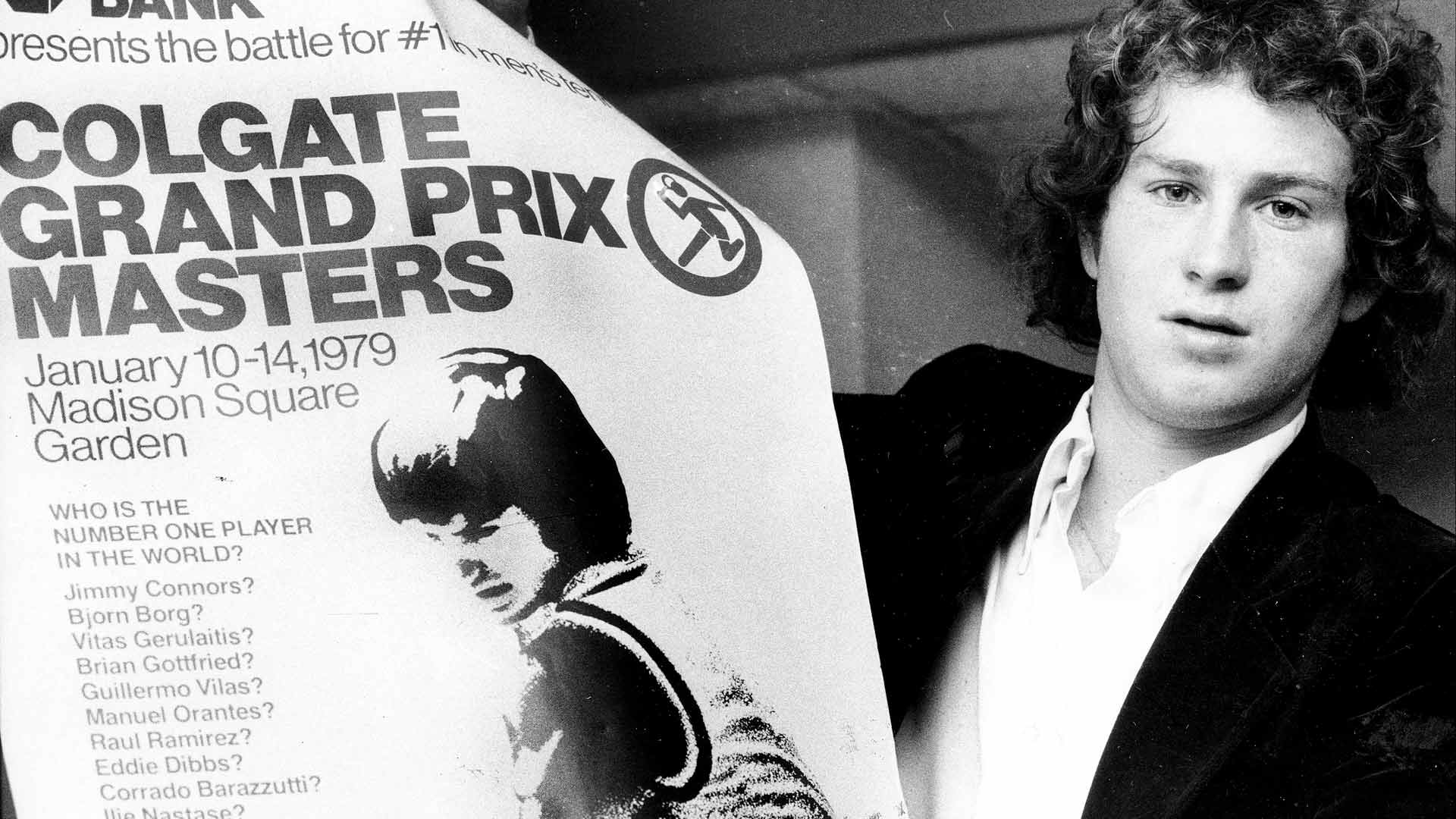The concept of a tournament in which each contestant meets every other participant, called round-robin, is not new in the tennis world. The tournament that made the system visible in tennis was the men’s Masters, the final event with the best of the tour that began in 1970, in Tokyo, Japan. The story goes that the organizers at the time launched it on a trial and error basis and without being planned. They just wanted to see what was going to hapen.
In that inaugural edition the round-robin was unique, it was not divided into groups as it happened later. The participants were the Australians Rod Laver and Ken Rosewall, the Americans Stan Smith and Arthur Ashe, the Yugoslavian Zeljko Franulovic and the Czechoslovakian Jan Kodes. Yes, just six players, not as is the current trend, with eight.
The count is easy: a total of 15 matches were to be played and there was no final: successes and defeats were added up and the best performer was crowned champion. But there was a snag: Smith and Laver tied with four wins and one loss. Smith lost to Ashe in three sets and Laver to Smith, also in three. That result is the one that marked the first paradox of the system: Smith, even with a lost match, was proclaimed winner of the Masters Tournament, something impossible until then in this sport. The “tie-breaker” was simple: Smith received the first prize of 15,000 dollars for having beaten the Australian in the round-robin, 4-6, 6-3, 6-4.
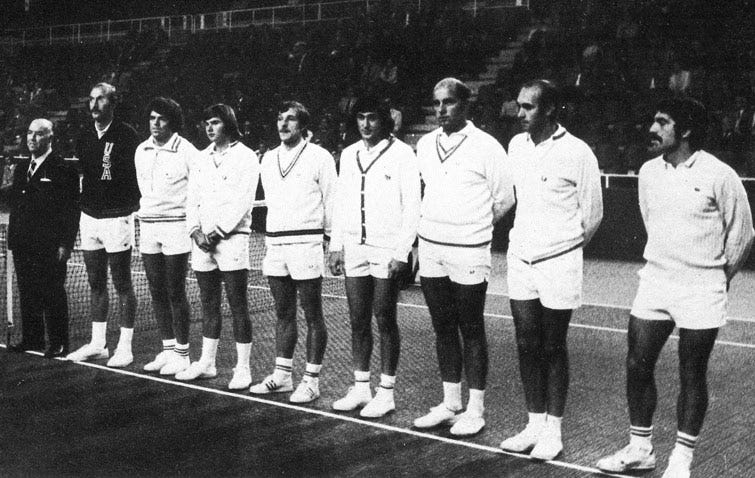
The controversy unleashed by this system, which the ATP wanted to implement in normal tournaments in the 2007 season, had a peak of problems during the Telmex Cup in Buenos Aires. This led the heads of international tennis to review their decision to apply it initially in 13 tournaments (Adelaide, Viña del Mar, Delray Beach, Buenos Aires, Las Vegas, Estoril, London, Bastad, Newport, Indianapolis, Umag, Washington and Stockholm). As soon as it was launched in Adelaide, a couple of doubts shook the idea and opened wide the eyes of the sports world.
In Argentina it became a nightmare for several tennis players, among them the Spanish Juan Carlos Ferrero, who could not believe when he was eliminated without having the chance to fight to stay on his feet: “It’s fucking shit,” he said when asked his opinion about the round-robin.
After seeing the trend, the director of Estoril – Joao Lagos – quickly decided not to adopt it: “After what I saw in the previous tournaments, with so many ambiguous situations, I decided that I didn’t want those ambiguities in my tournament”, he said with conviction. The people at Queen’s, in London, had also resigned, but much earlier.
The best (or worst, in this case) was yet to come: on Friday, March 2, 2007, in Las Vegas, the “creature” got out of hand for the ATP. They reversed the initial decision to give local tennis player James Blake a place in the quarterfinals instead of Russian Evgeny Korolev. The argument was an “incorrect interpretation of the ATP rules”. It all happened in just twenty-four hours, after Blake was reinstated to the last eight despite losing to Korolev in the round-robin. That caused the complaint of several tennis players and the intervention of the then ATP boss, the South African Etienne de Villiers.
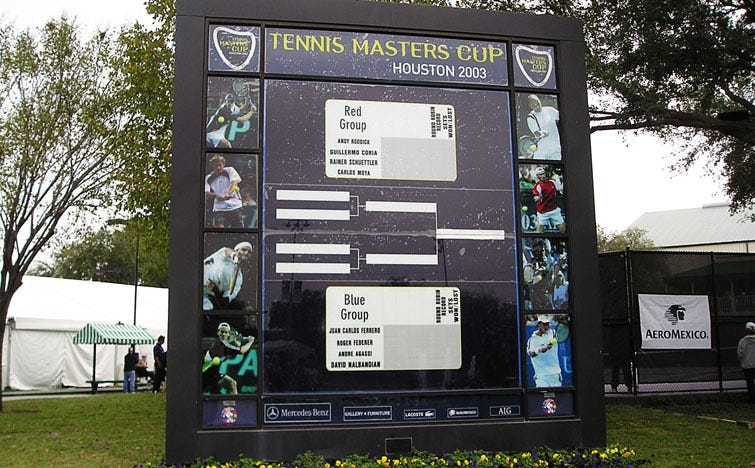
What was going on? It is convenient to explain it in detail: Blake had lost to Korolev, who in turn was defeated by Argentine Juan Martin Del Potro. Then, on Thursday, March 1, Blake had to beat Del Potro in two sets without losing more than five games to top the group. But, when Blake was ahead 6-1 and 3-1, Del Potro decided to quit due to respiratory problems. At that moment the tournament authorities reviewed the ATP rules and indicated that the match was invalid for Del Potro. Therefore, there was a tie between Blake and Korolev.
As a match between the two, as the rules said, favored the Russian, the qualifier should be Korolev and so it was reported. But later they reversed the decision: the general referee, confused, asked De Villiers to decide the situation and, unusually, Blake was back in the race with an inexplicable argument: “Blake was on his way to easily beat Del Potro”. Thus, a hypothetical victory of the North American was used to “qualify” him to the next round. But the chimera did not prosper: De Villiers came to his senses and Korolev was reborn in the magical and mutant draw.
The next day, the ATP CEO justified himself: “I made a determination that I thought was fair, but I understand that this is not part of the regulations and obviously, like anyone else, I must obey them. I apologize to James and I regret this storm in a glass of water. I shouldn’t have gotten involved,” he admitted before “indemnifying” Blake with $11,375, an average between quarterfinal and semifinal prizes. Very sloppy.
Back to the Masters, the historical statistics reflect several gray spots until an apparent order prevailed. Several formats have passed and serious vicissitudes were suffered where the waist of the organizers could bring the imminent sporting shipwreck to a good port. The unprecedented thing is that in tennis the possibility of losing was implemented and, nevertheless, being able to reach the title and, in certain cases, open to speculation.
An overwhelming fact: in the Masters this happened 27 times in 53 editions, between 1970, the year of its birth, and 2022 inclusive. In other words, just over 50%.
What is the best formula for this type of tournaments with few players? The one used today by the ATP Finals seemed to have no pronounced fissures and everything went smoothly, although it is essentially imperfect. But before? It is clear from the data that when the 1970 calendar was making its first steps, the Masters was not on anyone’s mind. It did not exist. Its creation was almost coincidental, when Pepsi, the company sponsoring the Grand Prix, came up with a promotional idea for its brand in Japan. To unite the commercial concepts, an extra tournament was “invented” once the regular professional tour was over.
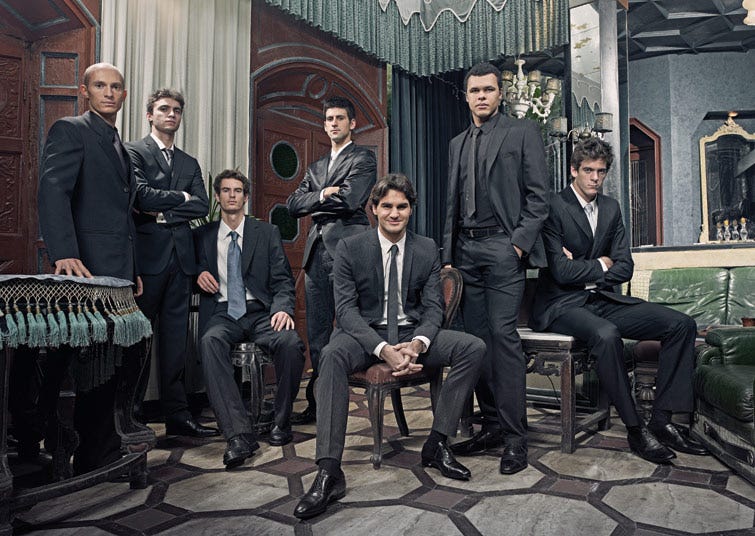
The offiicial photo in the 2008 edition: standed, Nikolay Davydenko, Gilles Simon, Novak Djokovic, Jo-Wilfried Tsonga; sat down, Andy Murray, Roger Federer y Juan Martín Del Potro // ATP
The traditionalist tennis environment criticized that “defect” of the tournament in 1970: to raise the cup even after losing a match. The most interesting thing is that it became almost a rule according to the numbers. And when the law is made, some seek to evade it… on certain occasions the round-robin allowed some players to choose an opponent for the semifinals, by deliberately not showing up or losing to another player, once they had qualified. In this way, they would finish first or second in their group according to their will and convenience.
In 1977, for example, Guillermo Vilas did not play against the North American Eddie Dibbs, nor Björn Borg against the also local Brian Gottfried, at Madison Square Garden. There remained the doubt, according to the records of that time, if it was a coincidence or a license that allowed them to play in the round-robin, even though Vilas had a muscular problem and preferred to rest, according to what he declared.
In the 1980 edition, the biggest incident in this tournament and format took place: after beating José Luis Clerc and John McEnroe, Borg, already qualified, lost unexpectedly and quickly to the North American Gene Mayer by 6-3, 6-0 – perhaps to save energy, according to speculation at the time. With those figures settled, the Czech Ivan Lendl (later a US-citizen), winner against Vilas and Harold Solomon in his group, entered to play Jimmy Connors with the opportunity to choose an opponent for the semifinals: if he won, he would meet Borg, the best of all; if he lost, he would face the most limited (at least by ranking), Mayer. Is it necessary to clarify the end of the story? Lendl lost in two sets and sent “Jimbo” to dance with the ugliest, that is, Borg. At the press conference Connors did not mince words. “Lendl is a tennis player without dignity,” he said angrily.
After long studies, the system was changed in 1982, with twelve participants, four qualified directly for the quarterfinals, by simple elimination. In 1985, its elite gathering feature was dropped and it hosted sixteen players. The idea did not survive and in 1986 it recovered its two zones of four and the round-robin, the most profitable elements in the case of eight players, but with a caveat: the semifinalists would be drawn by lot from the top two in each group. It did not work either, because in 1987 the Swede Stefan Edberg beat his compatriot Mats Wilander one night in two sets (6-2, 7-6) and that unprecedented wheel of fortune placed him against Wilander again the following evening, something that was not clear to the public and forced the occurrence to be put away in a drawer.
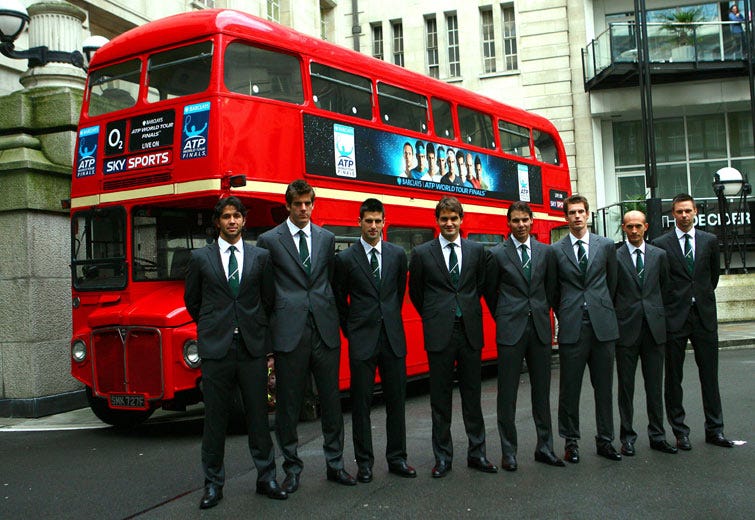
There were also opposing cases, where sportsmanship prevailed over personal interests, as happened with Jannik Sinner in the 2023 edition. With the qualification assured, the Italian faced the paradox that if he lost his third group match against Holger Rune, he would leave Novak Djokovic out of the competition. In front of his home crowd in Turin, Sinner showed professionalism and love for the sport: despite suffering minimal physical discomfort, he held nothing back and in two and a half hours defeated the Dane. He reached the semifinals and beat Daniil Medvedev with a high confidence, but guess who took the trophy away from his hands…
Similar situation in 1994, in the third match of the White Group round-robin. The German Boris Becker, already qualified, knew that if he lost to his last rival in the zone (Stefan Edberg) he would eliminate Pete Sampras from the semifinals, not bad to get rid of the world number one. But his pride was stronger: he fought a very close battle with the Swede and defeated him 6-7 (3), 6-4, 7-5. Thus, he automatically invited Sampras to continue the party. In the semifinals Becker beat Spaniard Sergi Bruguera and Sampras beat Agassi. The final? Yes, Sampras beat Becker!
In the 1972 version, in Barcelona: the North American Tom Gorman was winning the semifinals against Smith by 7-6, 6-7, 7-5, 5-4 and 40-30. In other words, match point in his favor. At that moment he approached the net, called Smith and talked to him for a few seconds. The audience only saw gestures and Gorman’s head shaking. He then shook his hand and the match was won by Smith, who went on to the final, which he then lost to Romania’s Ilie Nastase 6-3 in the fifth set. Why did he do that? Gorman warned that he had been seriously injured in that fourth set and considered that, if he won, he would not be able to appear in the definition the next day. So he conceded victory to his opponent, so that the final could be played and the public could enjoy it. Norman received a $2,500 “Sportsmanship Award” from the organizers for his action, in addition to the $5,000 he was entitled to for losing in the semifinals.
Stockholm 1975 was full of controversy. Romanian Ilie Nastase provoked a serious altercation after a ruling against him when he was playing against North American Arthur Ashe. Nastase protested for several minutes and would not budge from his position. Ashe, already fed up, retired from the court when the issue was 1-6, 7-5, 4-1 and 40-15 in favor of his opponent. The General Referee’s decision was to award Ashe the match, considering that his offense, to abandon, had been less serious than Nastase’s conduct. In any case, by the grace of the round-robin, it is easy to imagine who had the last laugh: Nastase managed to qualify and ended up winning the title by beating Borg in the final with absolute ease, in just 66 minutes of play.
The fate of round-robin on the conventional circuit always seemed to be held by a fine thread. Computers and the minds of tournament directors were loaded with a lot of data, good and bad. Old tennis fans have always maintained that the right format – for the Masters, at least – is the one used for so long by the WCT (World Championship Tennis), with eight players contesting the quarterfinals, semifinals and final, with all matches played in best-of-five sets. Simple, but not very “commercial” for the times we live in and the television pressuring with limited schedules.

End of the round-robin in the regular tournaments
As for the week-to-week variables, which included that disconcerting stage in Buenos Aires, the “Chronicle of a Death Foretold” came to an end on Wednesday, March 21, 2007: from Key Biscayne, in the middle of the Sony Ericsson Open, the ATP decided to go back on its proposal. The experiment lasted only five tournaments in three months: “The ATP is governed by facts and not by opinions; and we are committed to the philosophy of do it, try it, fix it or leave it,” said De Villiers, its president. It was logical, they had to come up with a solution, and soon. Since they couldn’t find a way around it, they cut their losses by eliminating it.
Tennis, then, returned to its daily peace, which collapsed in November 2009, with another incredible shudder with the Argentine Del Potro as the protagonist.
“I qualified! Or did I?”
In the closing event of 2009, the last match of the round-robin between Del Potro and Swiss Roger Federer defined whether one or both would go through to the semifinals. It depended on the games won and lost, as Andy Murray was watching to see if his performance in the group was enough to qualify or not. He did not make it, because although he had beaten Del Potro and had two games in his favor, it was the player from Tandil who advanced to the next round. Federer could also stay out if he lost in two sets with Del Potro, or stay in if he won just one game in the third set.
The ATP, installed at the O2 Arena in London, hesitated a lot when indicating the tie-break guidelines. And the worst was when they made Del Potro wait almost half an hour before confirming that he had qualified. Days before, the ATP had published on its official website that the first criterion was the result of the matches between those who tied and then the percentage of sets won, and finally the percentage of games. A day later they modified it: in a triple tie it was decided by difference of sets. But if one of the players was ahead in that category and the others were tied, they would decide the place in the semifinals by the result of the match between them.
On Thursday, when Murray beat Spaniard Fernando Verdasco in three sets, the ATP handed out an explanatory note: if Del Potro beat Federer in two sets, he would advance to the semifinals and, between Federer and Murray, it was not the percentage of sets won that mattered, but the match between them. The situation was incredible, as Federer was guaranteed a place in the semifinals if he lost in two sets, but not if he lost in three.
And it did not end there, as the ATP unofficially informed that, in case of a triple tie, only the difference in sets would be used and, if they tied, the difference in games, as it finally happened. Del Potro defeated Federer by 6-2, 6-7 (3) and 6-3 and, to clear suspicions, the Swiss asked him, when he greeted him at the net: “Did you make it or not?”.

